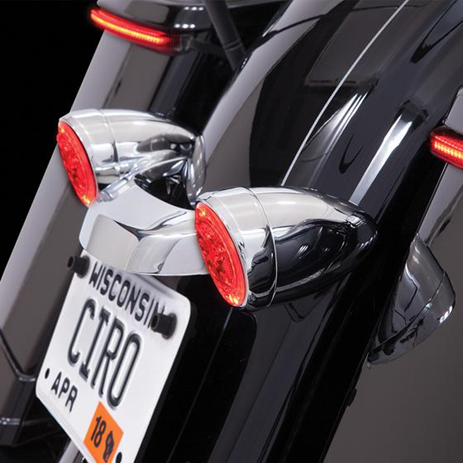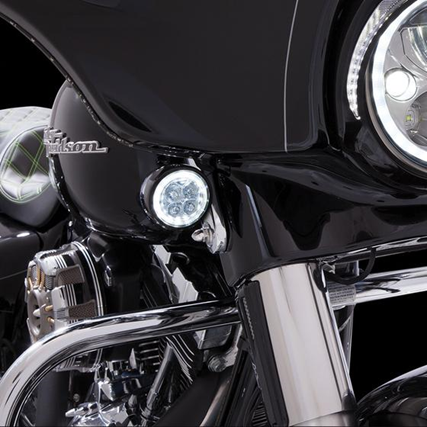
Charles R. Goulding and Peter Favata take a look at how integrating 3D technologies can enhance motorcycle lighting.
Ciro3D (Ciro) of Hudson, Wisconsin was founded by Aero Rudd, the son of the famous motorcycle company owner Tom Rudd and his company Drag Specialties. Ciro’s choice of ‘3D’ in the company name comes from its use of 3D CAD design software and Stratasys 3D printers.
Motorcycle lighting can serve multiple and sometimes overlapping purposes including basic lighting legally required for highway operation such as turn signals, safety such as enhanced perimeter lighting to provide greater overall visibility and improved turn signal lighting, as well as pure decoration. Oftentimes the more popular designs provided by custom accessory providers such as Ciro are later adopted by OEMs like Harley-Davidson.

Biker enthusiast Ryan Urlacher, owner and founder of Law Abiding Biker Media, has some excellent YouTube videos covering Ciro lighting for Harley-Davidson. Adam Sandoval also has extensive videos on his YouTube channel covering his favorite Ciro motorcycle lighting products.
3D printing and similar activities used for developing lighting may be eligible for Research and Development (R&D) Tax Credits.
The Research & Development Tax Credit
Whether it’s used for creating and testing prototypes or for final production, 3D printing is a great indicator that R&D Credit eligible activities are taking place. Companies implementing this technology at any point should consider taking advantage of R&D Tax Credits.
Enacted in 1981, the now permanent Federal Research and Development Tax Credit allows a credit that typically ranges from 4%-7% of eligible spending for new and improved products and processes. Qualified research must meet the following four criteria:
- Must be technological in nature
- Must be a component of the taxpayer’s business
- Must represent R&D in the experimental sense and generally includes all such costs related to the development or improvement of a product or process
- Must eliminate uncertainty through a process of experimentation that considers one or more alternatives
Eligible costs include US employee wages, cost of supplies consumed in the R&D process, cost of pre-production testing, US contract research expenses, and certain costs associated with developing a patent.
On December 18, 2015, President Obama signed the PATH Act, making the R&D Tax Credit permanent. Beginning in 2016, the R&D credit can be used to offset Alternative Minimum tax for companies with revenue below $50MM and, startup businesses can obtain up to $250,000 per year in payroll tax cash rebates.
Conclusion
It is nice to see the next generation use today’s technology to create exciting products. Including the name of that technology in the corporate name is also great branding.
